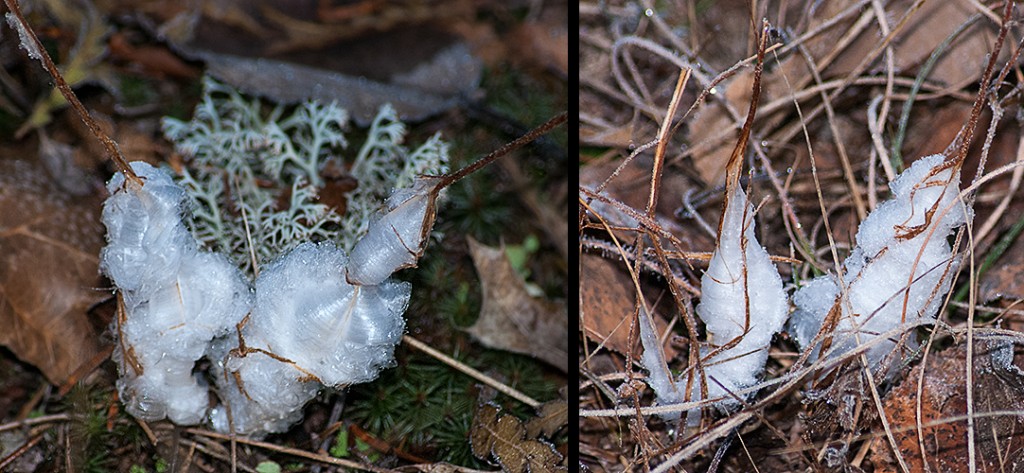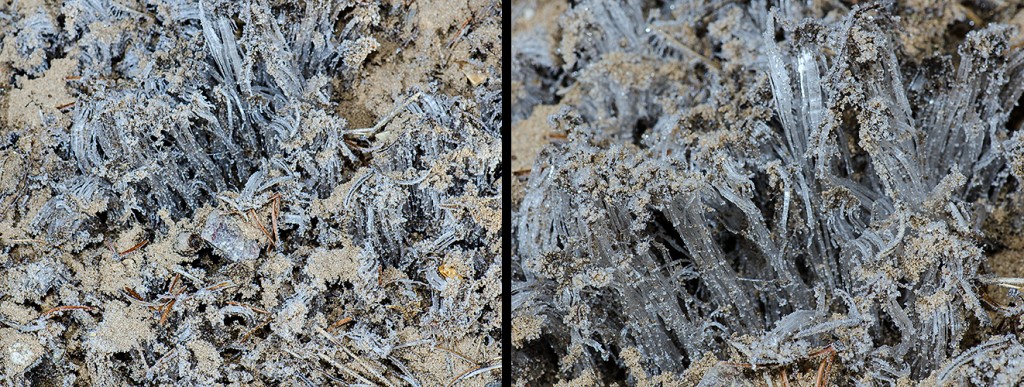The formation of Ice Flowers or Frost Flowers is an interesting phenomenon that I observe around Grayling, Michigan around the first week of November. I did not know how they formed until I found a website by Dr. James R. Carter from Illinois State University. Dr. Carter explains, “In a process called ice segregation cold water moves through a medium toward the presence of ice, freezes at the interface and adds to the ice.” I find them in the early morning, after a rainy evening or night. Grayling sand drains and dries quickly, leaving little water in the sand, so my formations are smaller than the photos on Carter’s website.
Ice Flowers in Grayling “grow” around a hollow, dried, plant stem. Dr. Carter has photographs of Ice Flowers on living plants, but plant life in the Jack Pine Plains has mostly finished its growing season by November and few live stems remain. The action of the freezing water damages the plant stem. Once an Ice Flower forms on a given stem it is unlikely that that stem will produce another.
Needle Ice develops directly out of the sand and I see it more often than Ice Flowers. The surface of the ground must freeze but the soil below remains warm enough to allow the water to flow. Needle Ice forms in a wide variety of soils and is found throughout the winter.
I watched the Ice Flowers disappear. Instead of melting they sublimated, meaning they changed directly from ice into water vapor. It was 20 degrees F when I started photographing and by the time it reached 35 degrees F, the Ice Flowers were gone.
It is fun to discover the answer to a personal mystery. I read, study, and seek explanations for the phenomena that I observe. As I get older, I can enjoy the beauty of Nature without necessarily classifying everything. However, I still desire to understand and name what she reveals to me.
Copyright 2014 by Donald Drife
Webpage Michigan Nature Guy
Follow MichiganNatureGuy on Facebook





Very interesting. I will have to look for these in our sandy soil.